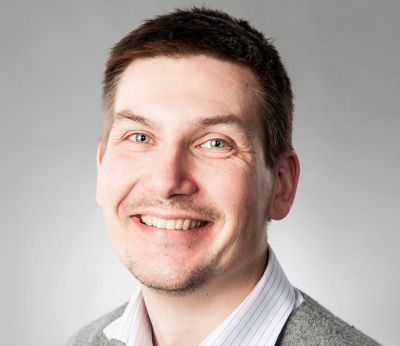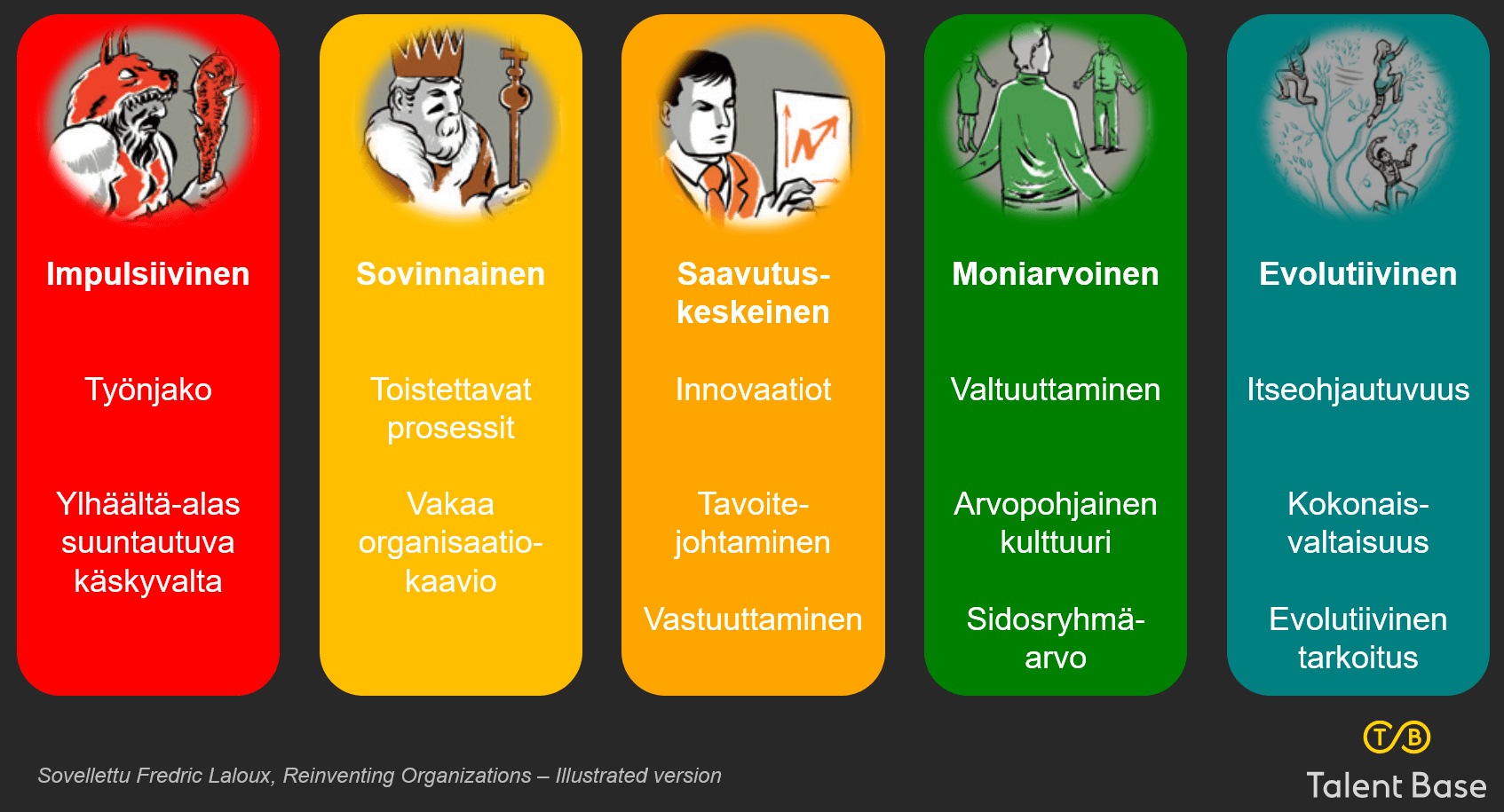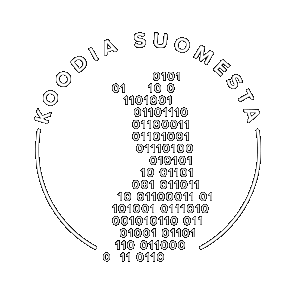How understanding the strengths of your colleagues and getting to know them in all ways is critical for Teal.
What is Teal
Teal is a word that means a blue-green colour. Teal has also recently been linked to describe the next, evolutionary way of organising.
The term Teal comes from Frederick Laloux's book Reinventing Organizations, in which he describes how our world view and, at the same time, the way we organise ourselves has evolved over time.
Scientists agree that humanity has evolved in leaps and bounds, not linearly. At each stage our society has changed radically, and at each stage a new and more effective way of organising itself has developed.
Laloux, like the Spiral Dynamics theory on which the book is based, uses different levels of worldview and organisation, the latest of which is Teal.
For decades, there have been people and organisations that think and act according to the Teal worldview, the largest of which employ more than 10 000 people. Teal is primarily an individual worldview. Nor is Teal one particular model of how to work or organise - different organisations have come up with their own models of organising, decision-making, self-management and co-management that reflect their own needs.
Teal breakthrough
Each stage of development has brought new breakthroughs and innovations to the way organisations operate - in terms of division of labour, processes, goal management and so on.
Teal has also identified three new breakthroughs that will influence how organisations embody the new worldview:
- Self-management
- Wholeness
- Evolutive purpose - Evolutive purpose
These innovations and this world view require a much stronger trust than the traditional organisation has required. One of the foundations for building trust is knowing other people - what motivates us, drives us forward, how we act in unexpected situations and so on.
Self-direction
The first breakthrough is self-direction or, more correctly, co-direction. The typical hierarchy, the traditional permanent manager-subordinate organisation, no longer exists. There are hierarchies within organisations, but the permanent organisation is being replaced by a situational hierarchy.
Together, the functioning of an organisation governed by autonomous decision-making requires a process of decision-making and change. If there is no manager, to whom can the decision be delegated? The new situation has led to new approaches, for example the emergence of the consultative process. In the consultative process, the decision is taken by the person who feels the greatest need to resolve the issue or who has the most knowledge about the issue. Before making a decision, however, he or she must seek advice from the people affected by the decision and from people with relevant expertise. Once the decision-maker has sought advice, he or she makes the decision that he or she feels will best serve the organisation and takes full responsibility for it.
The process of conflict resolution must also change. We cannot avoid conflict, so the organisation needs to have mechanisms in place to help people move forward in conflict situations without a manager. Otherwise the organisation will be stuck. Understanding the motives and approaches of others will help to move conflict situations forward in a positive way.
Holistic approach
The second breakthrough is holistic. In many workplaces today, there is an assumption that it is acceptable to show only the masculine and rational sides of oneself in the workplace. In Teal organisations, people are seen as whole and all aspects of humanity - feminine, emotional, intuitive and more spiritual - are welcomed into the workplace. A Teal organisation does not separate the work self from the rest of humanity, but accepts people as they are.
Inclusiveness is also about being able to safely voice views that differ from the mainstream of the organisation. These can lead to conflict, but in Teal organisations, conflict is not avoided, but seen as a learning tool. Teal organisations have developed processes for managing conflict that help to move on from it as smoothly as possible and enable learning to take place.
Being holistic gives you permission to be yourself in the workplace and also to respect what others are like. It gives you permission to know people as people, not just through a limited work ethic.
Evolutionary purpose
The third breakthrough is evolutionary purpose. In the work of teal organisations, the evolving purpose of the organisation overtakes the strategy in importance. Evolving, evolutionary purpose means that the members of the organisation listen to the organisation and what it wants to evolve into.
Traditionally, someone decides what the vision and strategy of the organisation is and starts shaping the organisation accordingly. Evolutionary purpose works from the inside out - it drives the organisation forward with its internal energy in the same way that a flock of birds moves flexibly to where it needs to go.
How to be Teal
Teal does not have a specific organisational model, role allocation or frame of reference. It is not a manual that you can implement or adopt.
Tea has a world view. A worldview that has as one of its foundations the belief in the good person. A person who does not need control from above to act in the best interests of the organisation, but a person who is self-motivated and well-intentioned. This world view requires a much stronger sense of trust than that required by a traditional organisation managed through the setting of objectives.
With the Teal worldview, the organisation changes from a hierarchical system to a swarm-like system that organises and operates according to need. Together, in a very human way.
There is no ready-made path. Each organisation has to create its own model, taking ideas from others, but not ready-made solutions. A good coach can walk with you on this journey, whose role is to help you reflect on what needs to change and what needs to be strengthened.
As you embark on this journey, you and your colleagues will come to re-examine yourselves and question what has been important to you and what your motives have been. You will get to know yourselves and each other again. This will help you on your journey together towards self-orientation and a new world view.
For a broader introduction to the topic, visit the Teal Finland website.

Reni Waegelein
The author is a long-standing IT manager and strategic and analytical developer with 20 years of experience. Her work philosophy is to put people before technology. She puts this mindset into practice in her role as Head of Lean Transformation at Talent Base and in our clients' digital transformation projects, from strategy design to implementation.


